
CHAPTER 11
ECONOMIC GROWTH AND INTERNATIONAL TRADE
Learning Objectives:
■ Distinguish the different ways in which growth can affect trade.
■ Discuss how the source of growth affects the nature of the production-possibilities
frontier.
■ Summarize how growth and trade affect welfare in the small country.
■ Assess how growth in a large country can have different welfare effects than
growth in a small country.
■ Identify possible terms-of-trade effects of growth in developing countries.
I. Outline
Introduction
- China – A Regional Growth Pole
Classifying the Trade Effects of Economic Growth
- Trade Effects of Production Growth
- Trade Effects of Consumption Growth
Sources of Growth and the Production-Possibilities Frontier
- The Effects of Technological Change
- The Effects of Factor Growth
Factor Growth, Trade, and Welfare in the Small-Country Case
Growth, Trade, and Welfare: The Large-Country Case
Growth and the Terms of Trade: A Developing-Country Perspective
Summary
II. Special Chapter Features
In the Real World: Labor and Capital Requirements per Unit of Output
In the Real World: “Spillovers” as a Contributor to Economic Growth
Concept Box 1: Labor Force Growth and Per Capita Income
Concept Box 2: Economic Growth and the Offer Curve
In the Real World: Terms of Trade of Brazil, Jordan, Pakistan, and Thailand, 1980-
2014
III. Purpose of Chapter
The purpose of this chapter is to demonstrate how economic growth affects international
trade and the possible welfare effects that accompany growth in the open economy.
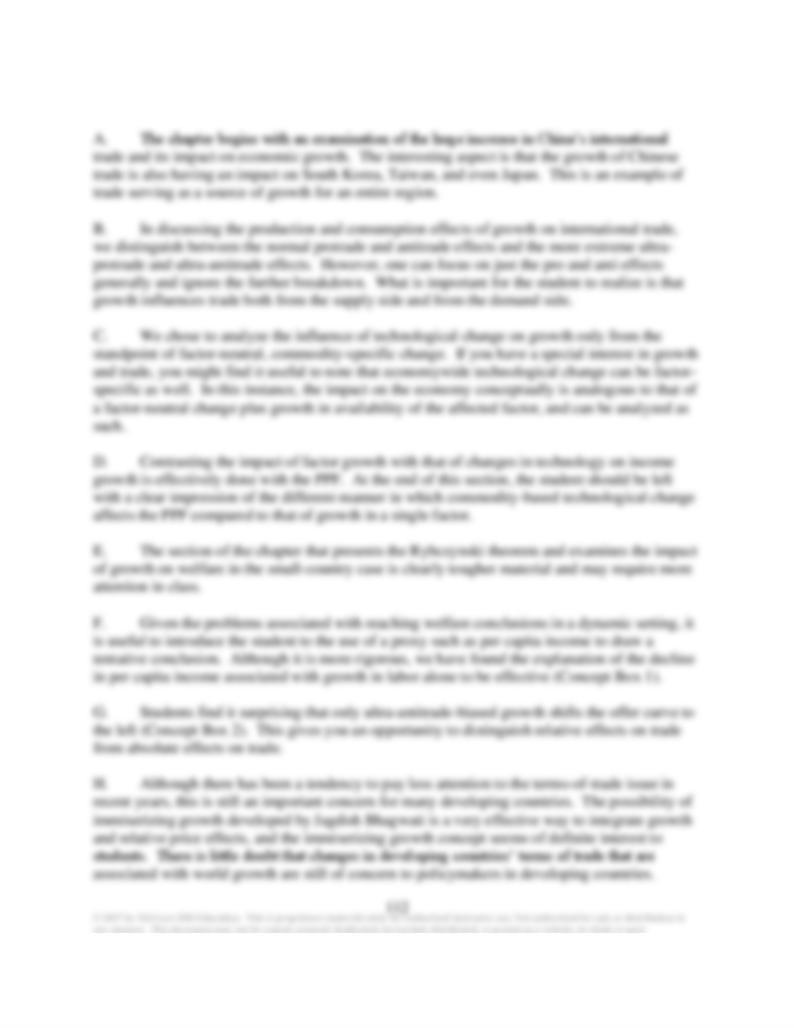
IV. Teaching Tips
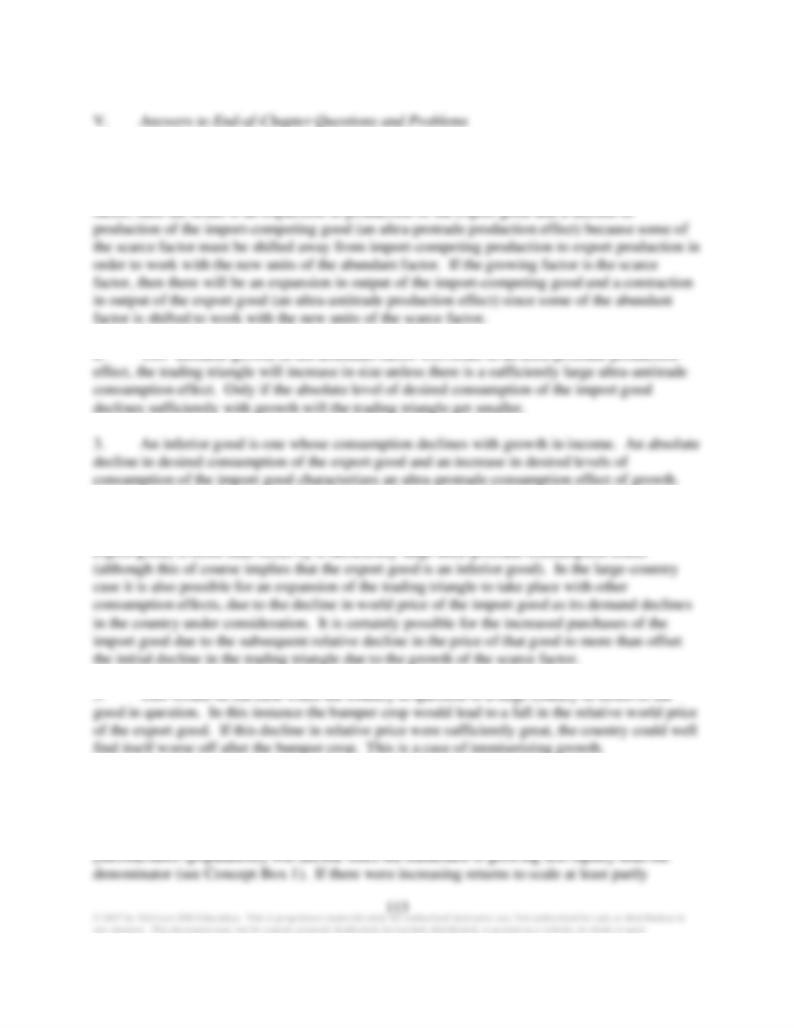
1. The growth in only one factor leads, according to the Rybczynski theorem, to the
expansion of output in the good using intensively the growing factor and a contraction in output
of the good using intensively the non-growing factor. If the growing factor is the abundant
4. The trading triangle could expand as in the small-country case as long as the Rybczynski
production effect (expansion in production of the import-competing good and contraction of the
6. If constant or decreasing returns to scale characterize production of all commodities, then
increasing only one of the inputs by a given percentage, e.g., 10 percent, will result in output
rising by less than 10 percent. If the input in question is labor (population), then a 10 percent
increase in labor will lead to a less than 10 percent increase in income, and per capita income
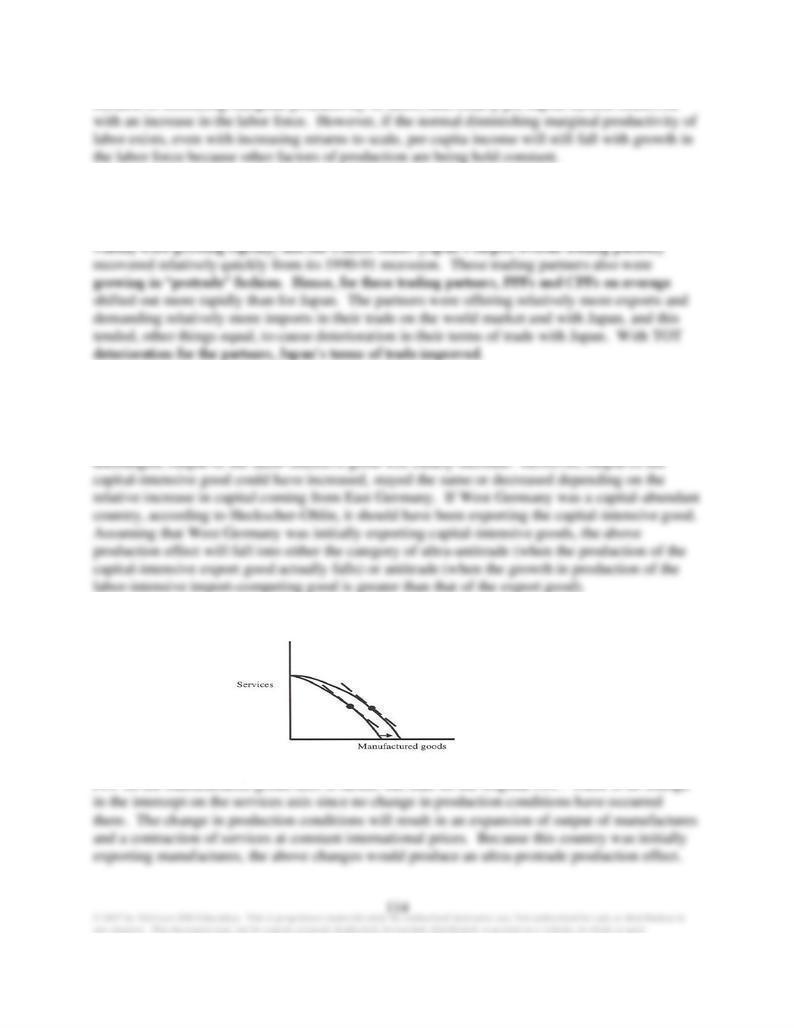
because of increasing marginal productivity of labor, then clearly per capita income could rise
7. The sluggish growth in the Japanese economy in the early 1990s meant that Japan’s
production-possibilities frontier (and hence its consumption-possibilities frontier) was not
shifting outward very rapidly. On the other hand, Japan’s major trading partners in Asia (e.g.,
8. The PPF of the unified Germany would lie outside that of the former Federal Republic of
Germany. In addition, since East Germany was relatively more labor-abundant than West
Germany, the new unified PPF will not have shifted out proportionally, but will have shifted
relatively more on the labor-intensive good axis. If international prices have remained
9.
Because the innovation was restricted to manufactured goods, the intercept of the new
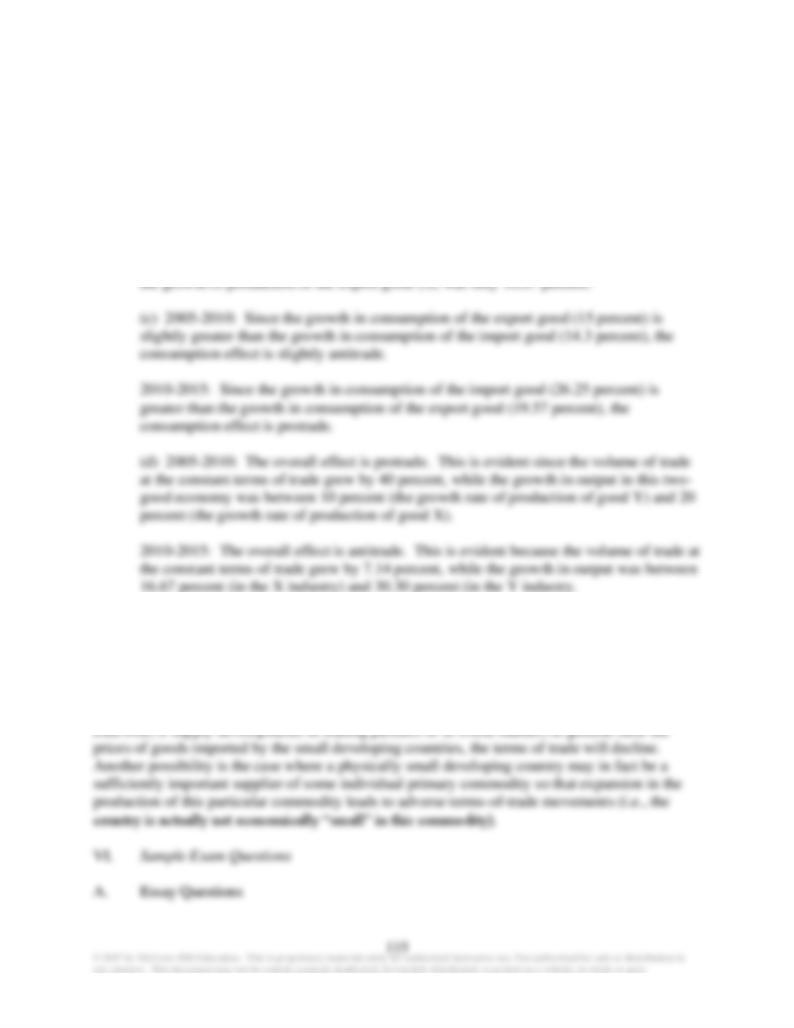
10. (a) Volume of trade-2005: 20 units of exports of good X; 10 units of imports of good Y
Volume of trade-2010: 28 units of exports of good X; 14 units of imports of good Y
Volume of trade-2015: 30 units of exports of good X; 15 units of imports of good Y
(b) 2005-2010: There is a protrade production effect because although production of
both goods increased, production of the export good (X) increased by 20 percent whereas
the growth of production of the import good (Y) was only 10 percent.
2010-2015: There is an antitrade production effect because, although production of both
goods increased, production of the import good (Y) increased by 30.30 percent whereas
11. Even if small developing countries are truly “small” in the sense that they cannot by their
own actions influence their own terms of trade, they can still experience a terms-of-trade decline
because of developments in their trading partner countries (i.e., the partners’ offer curves toward
the developing countries shift toward less willingness to trade). If demand shifts away from the
developing countries’ products over time because of taste changes or because of the rise of
substitutes or for other reasons, the developing countries’ terms of trade will deteriorate.
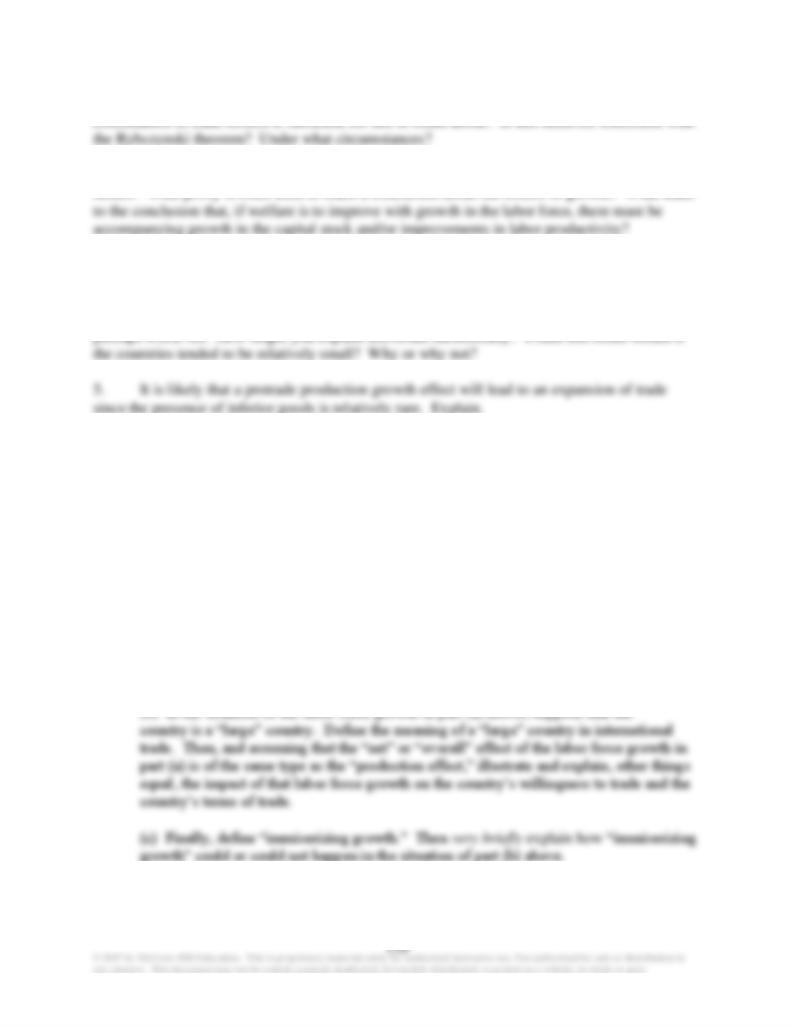
1. In recent decades, trade has been growing faster than income for many countries. What
2. Why is it difficult to analyze the welfare implications of growth in the neoclassical
3. Is it possible that growth in the scarce factor can actually lead to expanded trade in the
small-country case? Under what circumstances?
4. Developing countries often claim that growth and trade have left them no better off or
6. (a) Define the five types of “production effects” of economic growth in a country and the
five types of “consumption effects” of the economic growth. Then define the types of
possible “overall” or “net” effects of the country’s growth on the relative importance of
the trade sector.
(b) Developing countries are often concerned that their terms of trade might deteriorate
as economic growth occurs. In terms of the analysis of part (a) of this question, other
things equal, what type(s) of growth must occur and what type of country (“large” or
“small”) must a developing country be in order for the country’s terms of trade to
deteriorate as the country grows? Explain.
7. (a) State the Rybczynski theorem. Then, in a two-factor, two-good Heckscher-Ohlin
context, illustrate and explain the “production effect” of growth in the labor force in a
relatively capital-abundant country, other things equal.
8. (a) Define the five types of “production effects” of economic growth in a country. Other
things equal, if one factor of production in a country (either labor or capital) grows, what
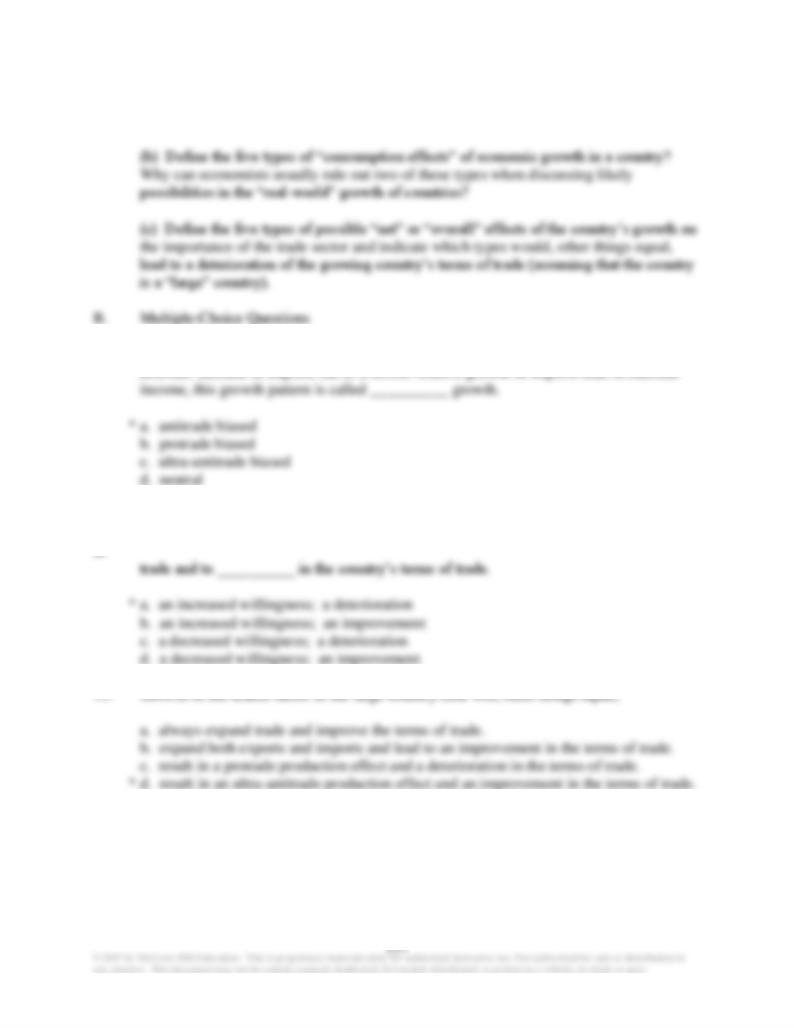
are the only two types of production effects that are possible because of the growth in this
factor? Briefly explain.
M
9. In the analysis of growth and trade, if a country's national income growth leads to an
10. In a Heckscher-Ohlin context, other things equal, growth of the relatively-abundant factor
of production in a country that is a “large” country will lead to __________ willingness
12. In the two-commodity context, you are given the following information pertaining to
country I in the year 2012 and the year 2017:
production of good X in 2012 = 200 units
production of good X in 2017 = 198 units
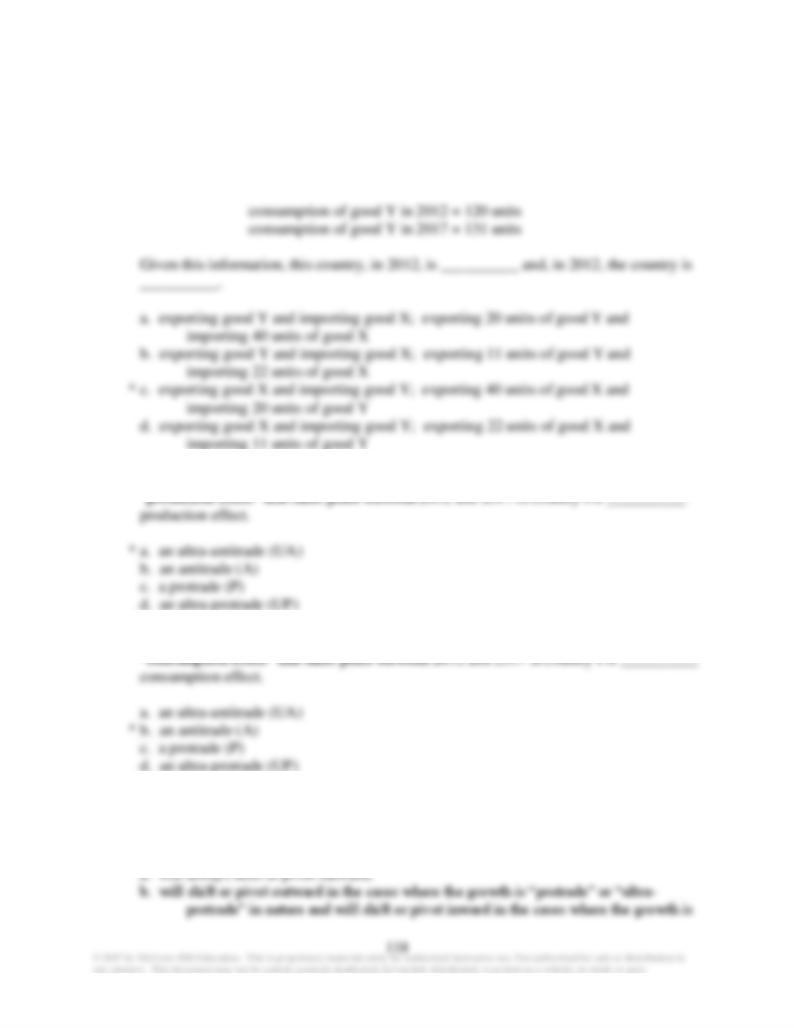
consumption of good X in 2012 = 160 units
consumption of good X in 2017 = 176 units
production of good Y in 2012 = 100 units
production of good Y in 2017 = 120 units
13. Given the information in Question #12 above, it can be validly concluded that the type of
14. Given the information in Question #12 above, it can be validly concluded that the type of
15. With economic growth (where the growth reflects the “net” or “overall” effect of the
production and consumption effects), a country’s offer curve (with the export good on the
horizontal axis)
a. will always shift or pivot outward.
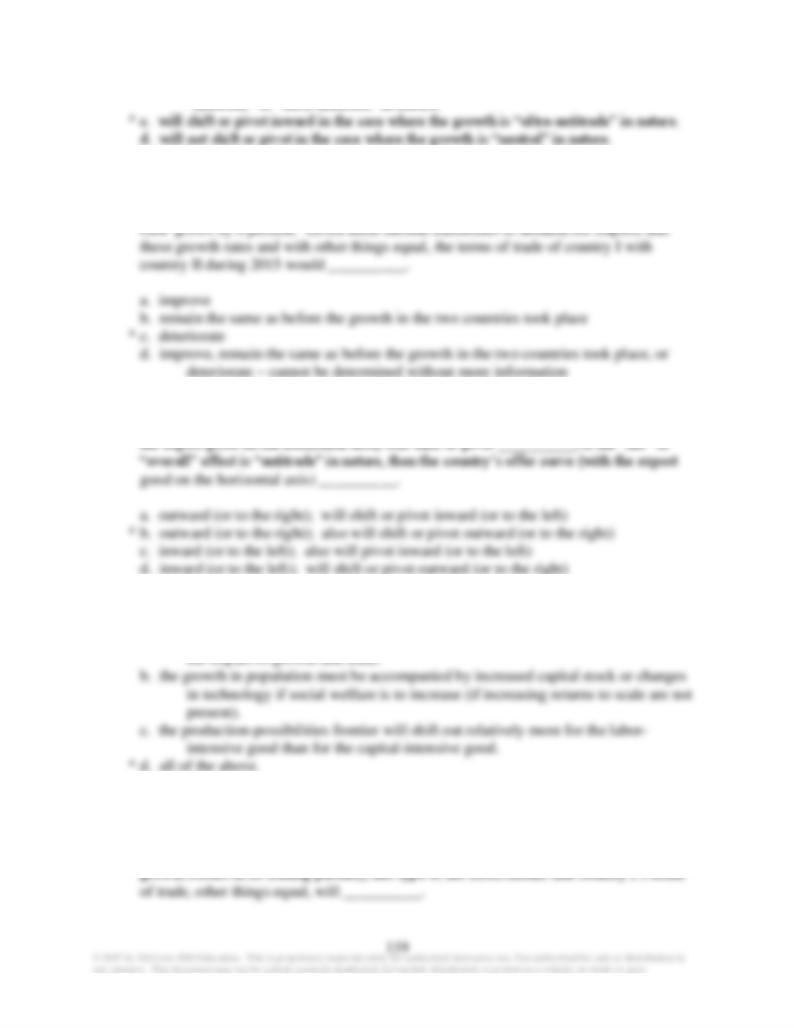
“antitrade” or “ultra-antitrade” in nature.
16. Assuming a two-country world, suppose that country I’s income elasticity of demand for
imports is 1.2 and that country II’s income elasticity of demand for imports is 0.9.
Suppose also that, during 2015, country I’s GDP grows by 5 percent and country II’s
17. If the “net” or “overall” effect (which is the net result of the production and consumption
effects) of a country’s growth is “protrade” in nature, then the country’s offer curve (with
18. If population growth is taking place,
a. one can no longer meaningfully compare community indifference curves to evaluate
19. Suppose that country I’s income elasticity of demand for imports (YEM) is 0.8. This
YEM means that, as country I’s national income rises, the “overall” or “net” effect of its
growth on its trade sector is an __________ overall or net effect. In the context of the
offer curve diagram, if country I is a “large” country and it grows (and assuming no
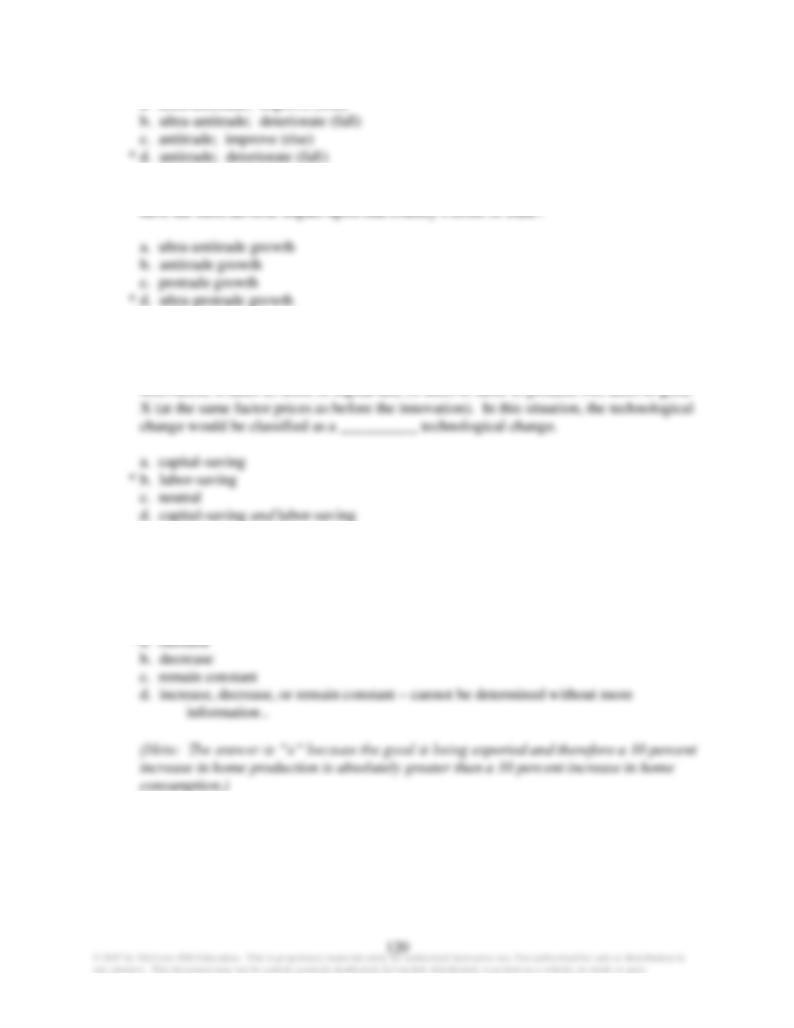
a. ultra-antitrade; improve (rise)
20. Other things equal, which one of the following types of growth in a large country will
21. Suppose that, prior to a technological change (innovation) in an industry, at existing
factor prices, it takes 30 units of capital and 100 units of labor to produce 500 units of
good X. (Assume that capital and labor are the only two factors of production.) After the
22. If, when a country grows, its home production of its export good increases by 10 percent
and its home consumption of its export good also increases by 10 percent, then, with the
economic growth and with other things equal, the country’s absolute quantity of exports
will __________.
23. Suppose that country I’s income elasticity of demand for imports is 0.8 and that country
II’s income elasticity of demand for imports is 1.5. These income elasticities indicate
that growth in country I would be classified as __________ and that growth in country II
would __________.
a. “antitrade” growth; also be classified as “antitrade” growth
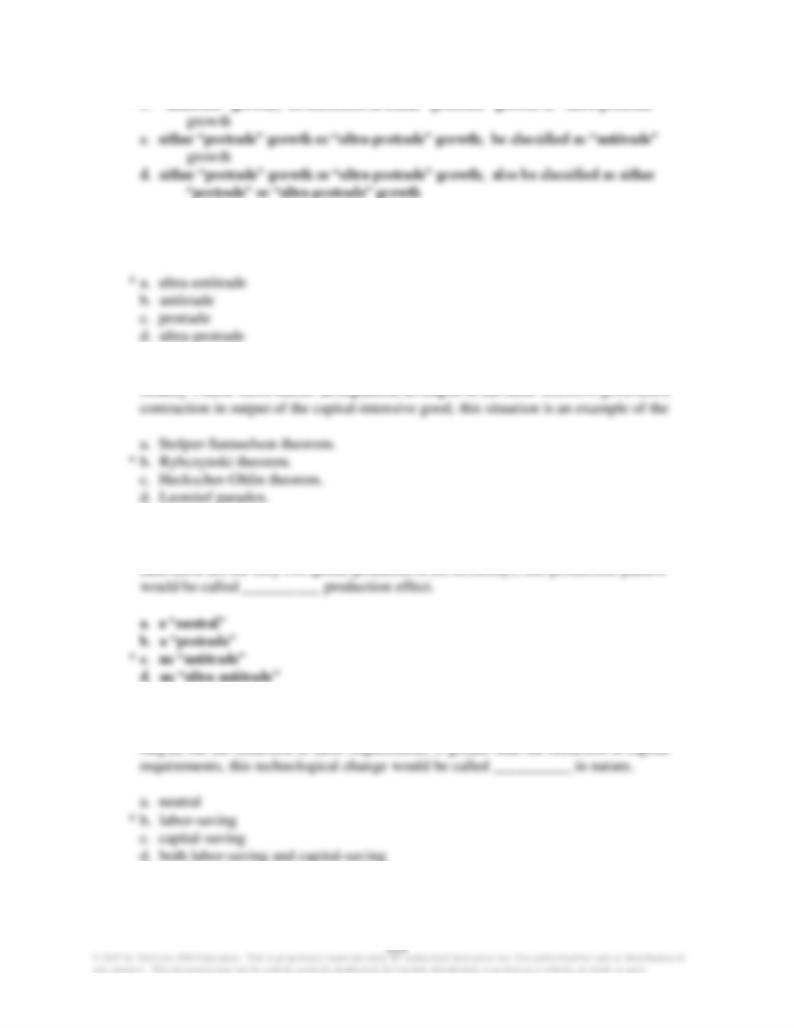
* b. “antitrade” growth; be classified as either “protrade” growth or “ultra-protrade”
24. If a country's total output grows by 10 percent and its imports fall by 6 percent because of
the growth, this growth pattern would be classified as __________ growth.
25. If, at constant relative prices in a two-commodity and two-factor world, growth in a
26. If a country grows such that, at constant relative prices, the production of its export good
rises by 5 percent and the production of its import-competing good rises by 15 percent
27. If technological change in an industry results, at given relative factor prices, in a
reduction in the amount of both capital and labor used to produce a given amount of
28. In the new endogenous growth models
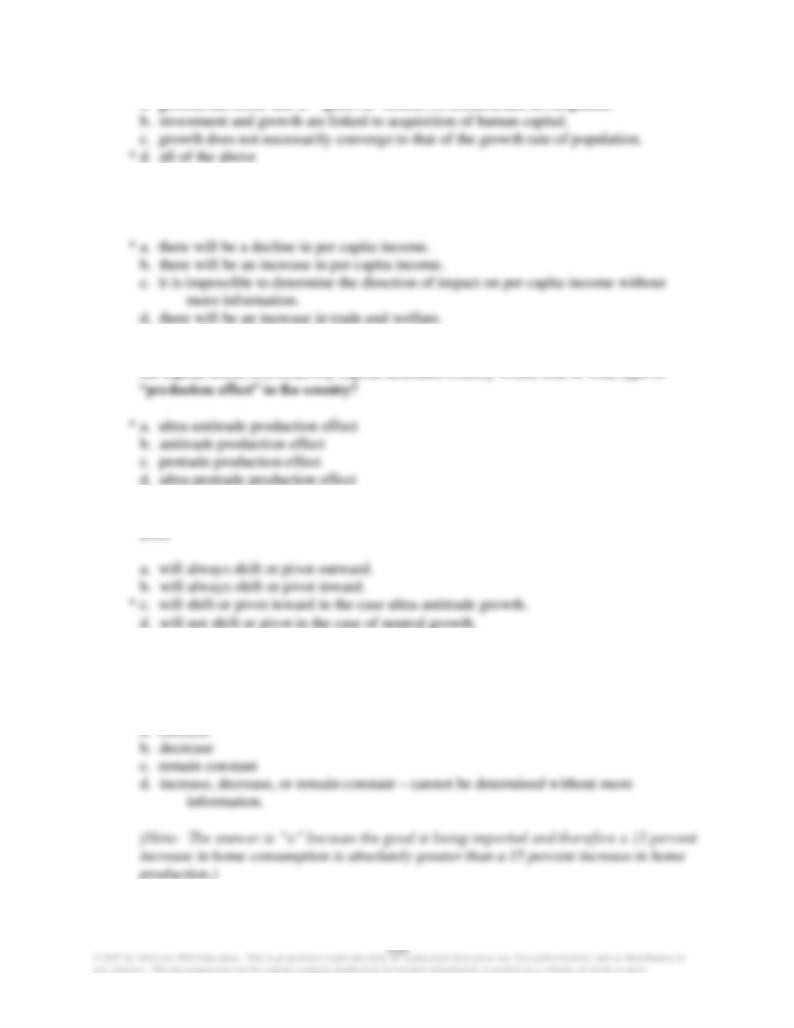
a. growth can occur due to “spillover” effects of research and development.
29. If growth in national income is due entirely to growth in the labor force, under the
Heckscher-Ohlin assumptions,
30. In the analysis of growth and trade, growth in the labor force (coupled with no growth in
31. With economic growth, a country’s offer curve (with the export good on the horizontal
32. If, when a country grows, its home production of its import good increases by 15 percent
and its home consumption of the import good also increases by 15 percent, then, with the
economic growth, the country’s absolute quantity of imports will __________.
33. Suppose that the “net” or “total” effect of the consumption and production effects of a

country’s growth is that the country’s offer curve shifts or pivots outward (i.e., the
34. Other things equal, which one of the following factors would likely NOT contribute to a
worsening of the terms of trade of emerging/developing countries?
a. heavy reliance on primary product exports